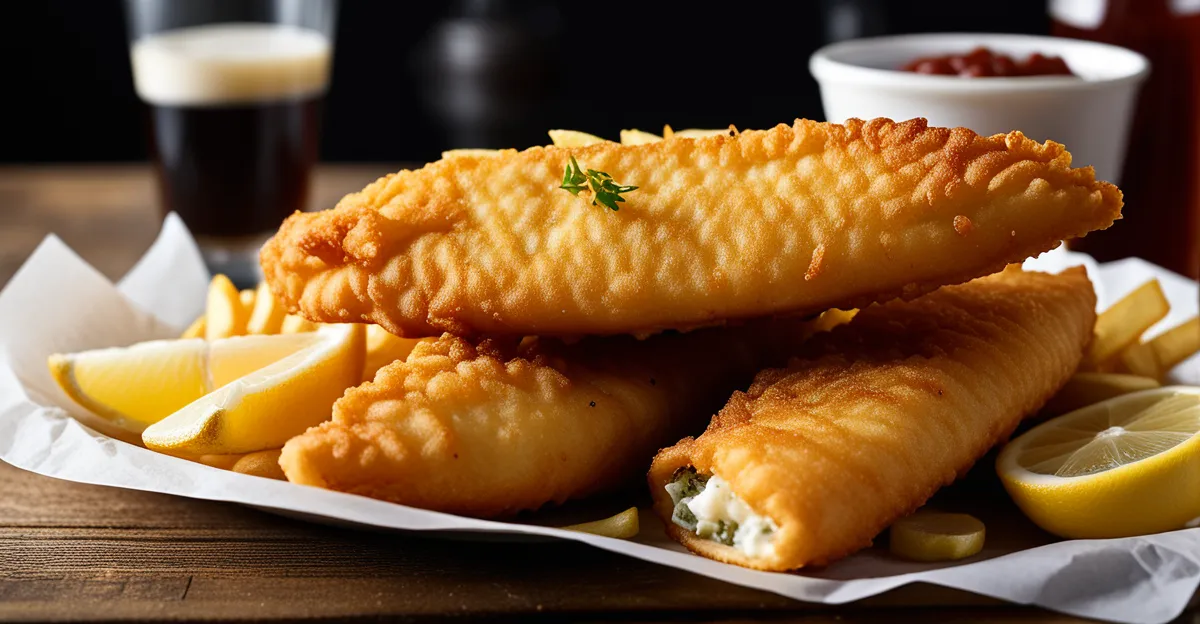Regional and Traditional Variations of Fish and Chips
Fish and chips hold a cherished place across the UK, but regional variations shine through, especially in the types of fish and traditional sides served. Commonly, cod and haddock dominate the menu, yet coastal regions favor different choices. For example, in Scotland, haddock is often preferred for its delicate flavour, while in parts of England like East Anglia, plaice or whiting might be popular.
Batter recipes also differ. Most locations stick to a classic, light beer or sparkling water batter for a crisp texture. However, some regions add a touch of vinegar or use thicker batters for a heartier crunch. Preparation techniques vary subtly—from frying temperatures to batter consistency—to suit local tastes.
Side dishes are equally telling of regional character. Traditional sides such as mushy peas and tartar sauce are widespread, but areas like Northern England often accompany with pickled onions or gravy. Others might add baked beans or curry sauce, reflecting local palate preferences. Altogether, these components create a truly traditional fish and chips experience with unique regional flair.
International Adaptations and Interpretations
Fish and chips have transcended their British roots to become a beloved dish worldwide, leading to diverse international fish and chips styles. In Australia and New Zealand, for instance, local fish like barramundi or tarakihi replace traditional cod or haddock, reflecting regional seafood availability. These versions often feature similar crisp batters but sometimes include unique seasonings catering to local tastes.
In Canada, particularly in coastal provinces, fish and chips often incorporate haddock or pollock, served with sides like coleslaw or poutine, showcasing a blend of British heritage and North American palate. South Africa offers another twist—batter may be spiced with curry powders, aligning with local culinary traditions and highlighting the influence of diverse cultures.
Unique serving styles abound globally; in Japan, tempura batter is occasionally used to make a lighter, crispier alternative for an Asian-influenced version of fish and chips. Similarly, in the United States, craft beer batters infused with regional brews emphasize the growing trend of gourmet, regional adaptations. These global versions illustrate how cultural adaptations and local ingredients shape the dish’s identity far beyond the UK, maintaining the spirit of traditional fish and chips while embracing fresh influences.
Modern Twists and Creative Alternatives
Modern fish and chips have evolved beyond the traditional fish and chips, embracing creative recipes that delight adventurous palates. Fusion-style variations are increasingly popular, drawing inspiration from global cuisines. For example, Asian-inspired versions might incorporate tempura batter or add spices like wasabi or ginger, resulting in a crisp yet flavourful twist on the classic dish.
Innovative variations also explore alternative batters, such as gluten-free mixes using chickpea or rice flour, appealing to those with dietary restrictions without sacrificing crunch. Additionally, chefs experiment with unique seasonings—ranging from smoked paprika to curry powder—infusing classic fish and chips with unexpected depth and character.
Restaurant innovations go beyond batter and seasoning, often playing with presentation and accompaniments. Some modern fish and chips feature upscale sides like truffle-infused mashed peas or aioli dips, creating a gourmet experience while respecting the dish’s roots.
These modern fish and chips variations illustrate the dish’s adaptability and enduring appeal, offering familiar comfort alongside fresh and inventive flavors for today’s diverse tastes.
Dietary and Health-Conscious Options
Health concerns have driven the rise of healthy fish and chips variants that maintain enjoyment without guilt. Among the top adaptations are gluten-free fish and chips, which utilize alternative flours such as rice, chickpea, or cornmeal to replace traditional wheat batter. These options cater to those with celiac disease or gluten sensitivities, ensuring a crisp texture and satisfying crunch without compromising taste.
Baking and air-frying methods have also gained popularity. Instead of deep-frying, baked fish and chips use minimal oil and oven heat, significantly reducing fat content while preserving the iconic golden color and flaky fish inside. Air frying achieves a similar effect, providing a crispy finish with less oil, appealing to health-conscious consumers.
For plant-based eaters, vegetarian and vegan fish and chips incorporate substitutes like banana blossom, tofu, or seasoned jackfruit. These alternatives mimic the flaky texture and mild flavour of fish, paired with traditional chips and sometimes gluten-free batter, maintaining key elements of the traditional fish and chips experience.
These dietary options demonstrate the dish’s versatility, allowing everyone to enjoy fish and chips adapted thoughtfully to modern health needs without losing its familiar charm.





